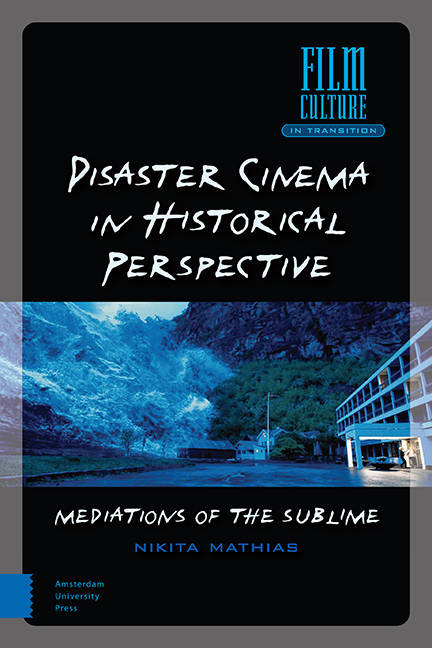7 - The Sublime in Disaster Cinema
Published online by Cambridge University Press: 20 November 2020
Summary
Abstract
The film analytical chapter moves along the lines of different key moments of the sublime: the Sublime as somatic excess, subjectivity, transcendence, modality, presentability, the geological sublime, the sublime and the ridiculous, as well as sublime hyperobjects and the ecological sublime. The primary analytical tool applied are Edmund Burke and Immanuel Kant's theoretical models of the sublime. The application of these eighteenth-century theorems for the analysis of twentieth and twenty-first-century motion pictures is solely justified through their shared historical foundation. This historical account takes into view the broader cultural horizon of the sublime, encompassing aesthetic thought, art historical iconographies, media technologies, aesthetic receptive conventions and strategies, scientific, economic, and cultural discourses, as well as general concepts of man's relation to nature's forces.
Keywords: Somatic Film Theory, Vivian Sobchack, Thomas Morsch, Technological History of Film and Cinema, Aesthetic Categories
In this final chapter, I will analyze a wide range of disaster films, whose historical account I presented on the previous pages. The primary analytical tool to be applied will be the various facets of Burke and Kant's theoretical models of the sublime, as I have occasionally made use of them in previous chapters. Let me stress once again that the application of these classical eighteenth-century theorems as a tool for the analysis of twentieth and twenty-first-century motion pictures is solely justified through the historical foundation shared by both theories and films. This historical account of the sublime, which I traced in the Chapters 2, 3, and 4 takes into view the broader cultural horizon of the sublime, encompassing aesthetic thought, art historical iconographies, media technologies, aesthetic receptive conventions and strategies, scientific, economic, and cultural discourses, as well as general concepts of man's relation to nature's forces.
As in the previous historical overview of the disaster film genre, also this chapter is essentially based on the technological and receptive frameworks of cinema that were pointed out earlier. My analysis of disaster films from all stages of cinema history must be considered against the backdrop of the divergent historical models of the cinematic experience. Unlike the previous film historical part though, this chapter will not follow a chronological order. Instead, its structure is based on specific themes of the sublime.
- Type
- Chapter
- Information
- Disaster Cinema in Historical PerspectiveMediations of the Sublime, pp. 207 - 328Publisher: Amsterdam University PressPrint publication year: 2020

